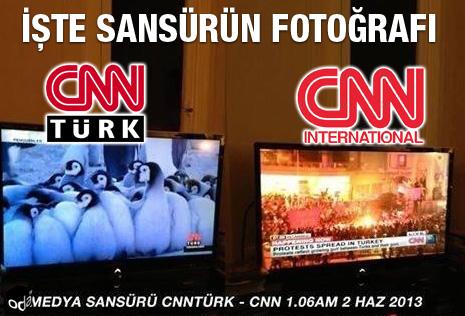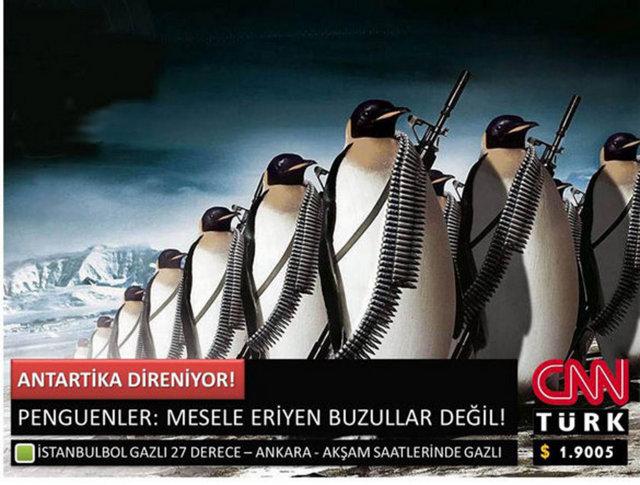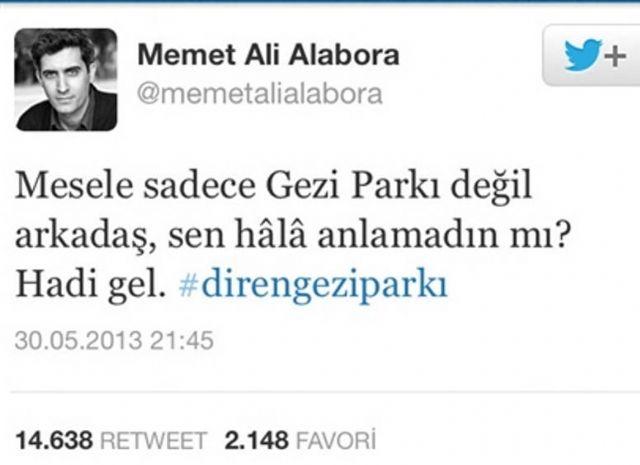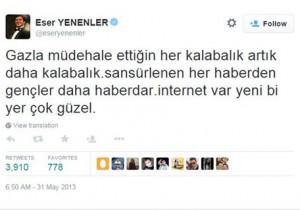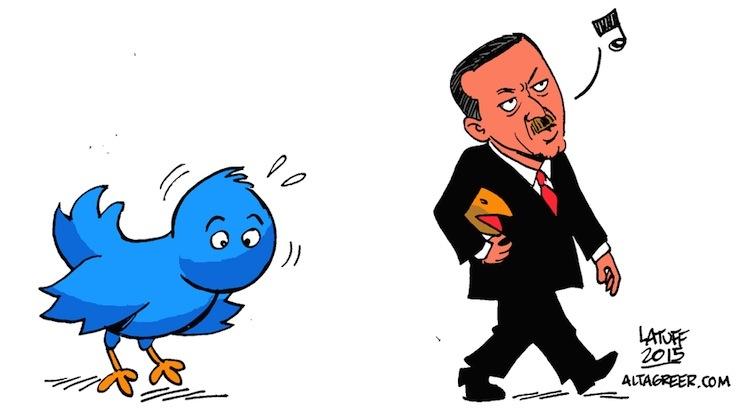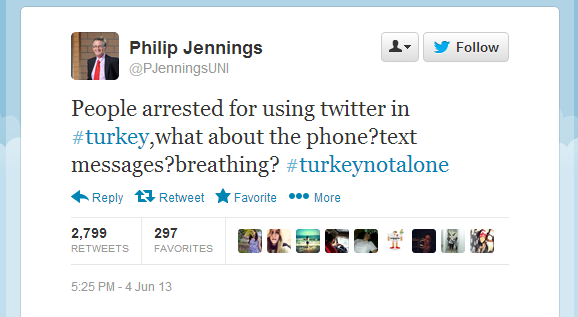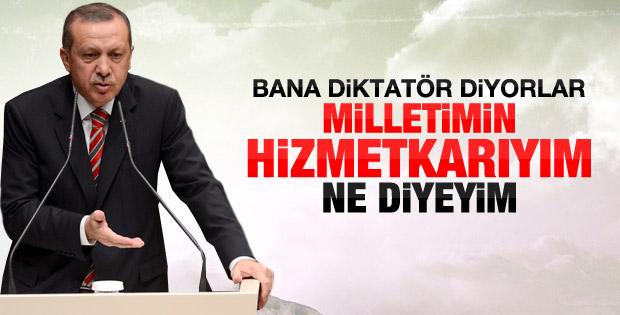
Trees vs Tyranny: Erdogan and the Gezi Park protests
Back in 2013, who would have imagined that an environmental movement could become one of the biggest opposition movements in Turkish history? This article analyses the Gezi Park incident and how Erdogan constructed his message through the movement.
Recep Tayyip Erdogan
Recep Tayyip Erdogan is one of the most powerful Turkish presidents in recent history. Although it is hard to organize an opposition movement against such a powerful political figure, in 2013 one of the biggest opposition movements, the “Gezi Park Protest” went up against Erdogan. In this article I will analyze Erdogan’s message through the Gezi Park Protest, the important role social media platforms played, and how freedom of speech was affected by Erdogan’s message. To shed light on Erdogan’s message and the media ban, I will briefly introduce him to provide context and explain his image and message.
Recep Tayyip Erdogan ihas been the President of Turkey since 2014. Previously he was also the mayor of Istanbul from 1994 to 1998. In the nineties he was a member of the Welfare Party, the Islamist party at the time. Coming from an Islamic background, and as a self-described conservative democrat, he founded the Justice and Development Party (AKP) in 2001. It has become one of the biggest conservative parties in Turkey. He served as the Prime Minister of Turkey from 2003 to 2014. Erdogan is a strong character, having represented his conservative ideology in the Turkish political sphere for more than a decade.
To analyze Erdogan’s message, the distinction between political messaging and daily language must be made clear. Political messaging is not about the literal themes a candidate communicates, but rather is about “the politician’s publicly imaginable ‘character’ presented to an electorate, with a biography and moral profile crafted out of the issues rendered of interest in public sphere." (Lempert & Silverstein, 2012). The message of a politician is the image created by the combination of his language with his gestures and behaviors. By analyzing these two elements, we can break down the messaging of a politician.
In the remainder of this article, I am going to zoom in on Erdogan’s message production in relation to the Gezi Park Protest and the media ban. I will first describe and analyze protestors at Gezi Park. I will focus on their use of media platforms, especially Twitter, to construct, organize and politicize the resistance. After describing the birth of the movement, I will analyze how Erdogan shaped his message through the protest through his public speeches and tweets.
Moving beyond the trees
At the end of October 2012, the Turkish government decided to renovate the city center and build a shopping mall in place of “Gezi park,” one of the few green parks left in Istanbul. On May 27th, 2013, a small group of people gathered in Gezi Park to protest the government’s decision to destroy the park. It was a peaceful rally. Nevertheless, that peaceful rally was not welcomed by the government, especially Erdogan.
The bulldozers started their work on May 28th, triggering more people to protest. More people gathered and showed that they would not let the government carry out the renovation regardless of the people’s will. Subsequently more police forces were sent to intervene. The Protest was polycentric: it brought different groups of people, left and right wing, religious andatheist, Kurdish and Turkish; together for a short term movement, just to protect the park and resist the government’s decision. Instead of ending the protest, police intervention aggravated the situation.
Within three days, Gezi park became a large and successful movement with thousands of people gathering in resistance to the police and Erdogan’s political control. Life in Gezi Park stopped, and the park became the site of clashes between protestors and the police. People were unable to get out of Taksim, (the location of Gezi Park) and all shops were closed, with some of them ransacked with police and civilians attacking each other. Police used a water cannon, sprayed tear gas at point-blank range, and used other types of violent force against the protestors. Many people and animals were injured and 22 people died, including children.
Despite the clashes in Gezi Park, the rest of Turkey was largely unaware and uninformed of the event. Almost all of the TV channels were broadcasting the Miss Turkey Beauty Competition, documentaries, or comedy shows instead of televising what was happening at Gezi Park. But social movements need media coverage and counter movements use their own mass media to mobilise and create an impact (Castells 1996, p. 2013). This is what the protestors did during Gezi Park. The only sources of information were Twitter and Halk TV, an unpopular leftist media channel. Protestors used those two to spread their message and organise the resistance. Turkish people also had to resort to international news sources in order to find out what was happening within their own country. As the rest of the country learned of Gezi Park, they gathered and started to protest in each city. The protests suddenly became a national movement.
#ban or Media’s Choice?
Digital media also functions as means of informing oneself about resistance movements around the world and showing solidarity (Maly, 2014).However, during the first three days of the Gezi Park protest, three of Turkey’s biggest news channels (NTV, CNNTURK, and HABERTURK) did not show anything about Gezi Park. Instead of airing 'the news' they showed documentaries about penguins, which later became a symbol of the Gezi Park resistance movement. But was this their own choice or was it done due to outside pressure? Considering thechannels’ previous broadcasts, we might say that they neither support nor oppose Erdogan, but they may be under pressure nonethless.
The picture of censorship
Strangely, the three biggest media channels in Turkey devoted attention to Penguins instead of reporting on the protest and clashes in Gezi Park. The protestors appropriated the Penguins as an emblem of their movement. One of the most famous tweets about Gezi park was a photoshoped still from CNN Turk, showing penguins wearing armor. This was accompanied by the caption: “It is not about only the Gezi park, can’t you see!".
Occupy Antarctica
As the decision was supported by the cabinet and Prime Minister, the Gezi Park protesters were considered as resisting the will of the government. Given the public speeches Erdogan did at this time, and people’s reactions to him both in Gezi Park and on Twitter, there was a discursive battle between Erdogan and the people. Erdogan did not like the fact that there was opposition to his will. There is no source or evidence verifying the fact that Erdogan pressured media channels not to air anything, but considering his powerful, merciless image, media were under pressure regardless, and it wouldn't be surprising to know that there was censorship of the TV channels.
Can’t stop us!
Digital media are important infrastructures for mobilization outside of the existing organizations and individuals, and to attract external attention (Maly, 2014). Since all media channels during the Gezi Park Protest were under pressure from the government, Twitter was used as exactly for that purpose: organizing political resistance against Erdogan. Eventually the censorship reached Twitter, however that didn’t stop people, who found a way to use Twitter by using VPN-servers.
As mentioned, Twitter was the communication tool: the day police raided Gezi Park, 15.077.500 tweets were sent from Turkey. Even after midnight 3.000 tweets were posted per minute despite the fact that 3G networks were down in the main areas of protest in Istanbul. The following day the number of tweets posted reached 18.875.909, and the third day saw 16.720.801. These numbers demonstrate the intensity of Twitter usage with hashtags such as #direngezi, #geziparki, #occupygezi and #resistancegezi (Monshipouri, 2017).
It is not about only Gezi Parkı anymore, don't you see? C'mon join us. #resistgezi
This tweet was one of the most retweeted one during Gezi Park, tweeted by one of the most succesful actors in Turkey. It says: "It's not just the park, buddy, don't you get it? Come on." This tweet showed people’s reaction was more than fighting for a green area, they finally had a chance to resist Erdogan’s will and authoritarianism.
The group of people to which you use pepper gases are more powerful and crowded. All these young people are more informed about the censored news. Now, we have Internet.
This tweet shows that censorship was not a coincidence and people are aware of it: "Every crowd you gas is now more crowded. Young people are aware of the news. The internet is a new place." That’s why they will continue resisting through the support of digital media. These tweets show how new media, especially commercial social media like Twitter, function as an integral infrastructure of the Gezi Park movement. Social media are a communication tool for people to engage in discursive battle to construct the meaning of the protest and affect the image of Erdogan. Considering the importance of media, both TV channels and Twitter, it was a predictable move to ban them and attempt to cut communication between people.
I don't want to hear any more Twitter.
Authoritarianism is back! : Erdogan’s message
The term “Message” in politics has a wider meaning than its dictionary definition, as explained by Lempert and Silverstein (2012). They describe the concept of message as: “The politician’s publicly imaginable character represented to the electorates with a biography and a moral profile crafted out of issues rendered of interest in public sphere.” So, message can be described as everything related to the politician, such as identity, personal values, clothing, gestures, manner of address, pronunciation etc. In other words, the combination and organization of these elements while tackling certain issues can be defined as “design elements” of a political figure’s message and image, which is striking an attitude towards these issues (Lempert & Silverstein, 2012).
While analyzing Erdogan’s message through the Gezi Park issue, I focus on his political communication and the political uses of language (Blommaert, 2001, p.12) through his public speeches and tweets. From this perspective, politics is understood as "a complex of processes of actual, language-centered communication and action that takes place in an historical, social, cultural and political context"(Lempert & Silverstein, 2012).
Even though the Gezi Park protests were mainly about opposition to Erdogan’s will and decisions, his stance on the issue did not change. He never stepped back, in fact, quite the contrary – he decided to stand behind his decision. What type of image did he create in the eyes of different people? His mode of articulation sounds like that of a strong authoritarian figure; the language he used in his tweets and speeches shows that. His message is that “He is the one having the last word”. But is that a president-like image in a democratic country?
Erdogan's speech and stance communicate the image of an authoritarian ruler. Resistance, a key component of a democracy, is immediately discredited: only the voice of the leader counts. What Erdogan has managed to create is the construction of himself as a powerful, unopposed leader chosen by the Turkish nation. This message is embedded in the structures of the state. It is not just an image, but a reality that is embedded in the media under his control, through the attack on any press or media that challenges his message. The police and the law are thus all co-constructing this message.
This authoritarian populism is of course a construct. Erdogan is not really speaking nor elected by all Turks, half of the population did not vote for him. But this didn't change his image production: over the years he has strengthened his image (at least for his followers) in his public speeches, which became his way of presidential communication. However, during Gezi Park protest, he also used Twitter to remind everyone who has the power, and communicate his attitude to protestors.
How Erdogan re-constructed his oppressive image through Gezi Park
Erdogan is quoted as saying “You better leave Gezi park before tomorrow...” Looking at his statement, it is clear that Erdogan is warning people to stop the resistance. However, this was not just a warning but a threat, snubbing all those people protesting at Gezi Park. This is not his only statement which intimidates and creates an uncompromising attitude. Erdogan understood 'listening to the protest' as showing weakness, as undermining his identity as the unquestionable ruler of Turkey.
He therefore organized a counter protest. On June 2nd, 2013, Erdogan said: "If they bring 20.000 people to Taksim, I can bring 500.000 people to Kazlıdere (a location in Taksim). We have that power, we have that opportunity." This top-down countermovement can be read as a discursive battle over who is the real representative of the people. The one who can mobilize the most people is then the real populist.
Populism can be described as a communicative frame (Maly, 2018), a very specific type of message production. To understand whether a politician is populist, we should look at how they construct their language, as populists claim to speak with the voice of the people. This voice is constructed to gain support and use media to extend that voice to all people. Looking closer at Erdogan’s sentences, it is notable that he uses “we” and “our decision” - implying that he is speaking as a voice of the people.
This echoes other populist leaders such as the United States's Donald Trump. All of Trump's speeches are framed as speaking in the name of the common people, which is called Vox populism (Maly, 2017). Maly (2017) describes Vox populism as " a frame that distinguishes ‘the people’ from the elite. This open construct of ‘the people’ enables many individuals to imagine themselves as being a part of the whole, and they support the candidate who seemingly voices their concerns." Looking at Erdogan’s speeches, Erdogan can be called a Vox populist by speaking in the name of the majority of the people.
Erdogan’s statements show that his way of speaking is extremely authoritarian, his political language gives the impression that he doesn’t care whether people protest. Also looking at his public speeches , he always uses “we” instead of “I” which gives the impression that he is speaking on behalf of the people. He can be called a populist alongside being authoritarian. These two are usually associated together as an authoritarian uses his populist message to carry out illegitimate actions.
A second battlefield was opened around the meaning of the protest when on May 29th, 2013 in Erdogan’s first statements to the protestors at Gezi Park. He then said “We made up our minds, and our decision about Gezi Park will be done…. If you’re calling yourselves environmentalists and the aim of your protest is only for that purpose, we’ll provide you a place where you can plant trees.” What this did was limit the protest to 'trees'. If the protestors are sincere, he wants to plant trees on another location. The same motive reoccured on June 2nd when Erdogan stated: "You make you protest. Legally or illegally. Your issue is really planting trees?"
Implictly he claimed that the protestors were liying, that they were only using the trees to fight Erdogan. Erdogan knew that the issue was not only about trees, and stated that he is aware that the opposition goes beyond the trees. By highlighting this, he tried to undermine support for the movement. He tried to avoid showing 'weakness', which is why he never tried to find a middle ground. Instead he threathens the opposition and speaks without any doubt of his position, as he is the only one who knows best. On May 30th Erdogan announced : “Whatever they do, we have made up our minds and will do it.” On June 2nd he further said:
“At this point the protest is not only about the trees in Gezi Park, it has become ideological. What are those ideologies? Wondering if they can overthrow the mayor of İstanbul or the government. We won’t withdraw the police force, because Taksim is a place full of extremists. Police were there yesterday and will be there today. This is not only about the AKP government. Wherever you go around the world, you’ll see governments take those kinds of measures.”
Here again, we see how Erdogan fully engages in this discursive battle of meaning and frames the protestors as (1) liars and (2) extremiststhreatening to take over the city. He is standing behind the image, created by him, of an undefeatable leader who cannot be beaten by protests.
Erdogan’s message can also be seen not only through his statements but in his responses to opposition. Erdogan’s reactions to people posting opposing tweets or giving speeches also strengthens his dictator image, considering people who published opposing views were arrested or detained in Turkey. People are now scared to publish opposing views, an unusual situation for a "democratic" state.
The final example of Erdogan’s dictator image can be seen in his reaction to restrictions on Twitter, as Twitter has been blocked at least 4 times in the last decade. Erdogan states: “The international community can say this, can say that. I don’t care at all. Everyone will see how powerful the Republic of Turkey is.” The statement clearly shows that he has no issue with what the rest of the world thinks. He wants to show the world how powerful his country is, and by extension how powerful he is.
What happened next?
Gezi Park Protest was not just a spontaneous action; it was a life changing event. Prior to the event, Erdogan had never faced such a strong opposition. The use of new media and especially the message the movement communicated reached out to new types of sympathizers, activists, and actors (Maly, 2014). In Erdogan's reactions the image of an authoritarian populist became visible for the world and for everyone opposing him. For his followers, he tried to create and maintain the image of a ruler of the people fighting against lying terrorists.
How did Erdogan emphasize his message through the movement? As he is an articulate person, and Erdogan used the power of the words to characterize his authoritarian message gently in his public speeches and tweets (Lempert & Silverstein, 2012; Silverstein, 2003). But who won this discursive battle? The protestors or Erdogan? I think both sides showed how powerful they can be, that's why Erdogan made his image more authoritarian when he saw how powerful the community could be. Although his message was crystal clear, he never admitted to being a dictator, but called himself a servant of the nation, in an attempt to justify what he did.
They called me as a dictator, but I am a servant of my nation
References
Blommaert, J. (2001) Ik stel vast: politiek taalgebruik, politieke vernieuwing en verrechtsing. Berchem: EPO.
Castells, M. (1996) The rise of the network society. Oxford: Blackwell Publishers. - (2013) Communication power. Oxford: Oxford University Press.
Lempert, M. and Silverstein, M. (2012). Creatures of politics. 1st ed. Bloomington, Ind.: Indiana University Press.
Maly, I. (2014). New media, new resistance and mass media
Maly,I. (2017). Why Trump won
Maly, (2018). Nieuw Rechts. Berchem: Epo.
Monshipouri, M. (2017). Information politics, protests, and human rights in the digital age.
Silverstein, M. (2003) Talking politics: the substance of style from Abe to ‘W’. Chicago: Prickly Paradigm Press.
